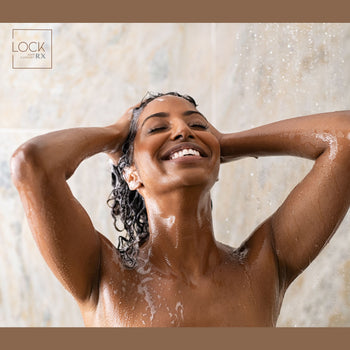
Keeping your scalp clean is one of the most important things you can do to maintain normal healthy hair growth. Recognizing the ingredients that will lead to optimal hair health, however, may not be as simple to identify. Oftentimes, the products we think are cleaning our hair or the bottles that catch our attention on the shelf are full of harsh chemicals that deliver the opposite results for which we are striving. Thankfully, buying quality products can be made easier by doing a quick scan of the ingredient list on the back of the bottle. Do you know which ingredients will help and which will set your hair health back?
Sulfates. If you’re the kind of person who likes a good lather when you shower, you may unknowingly be exposing yourself to the negative effects of sulfates. That lather, thought it may feel good, actually lowers the surface tension of the water, allowing it to spread out and penetrate more easily. Sulfates cause buildup and breakage over time, wash away the natural oils in your hair, can fade color, and can make your hair brittle/frizzy. Contrary to shampoo promises, sulfates actually strip natural oils from the scalp and hair, while washing all of those dead skin cells and grime.
Parabens. Acting as a deterrent to bacteria and mold, it may seem that parabens would be good for hair health, but these preservatives can dry out and irritate the scalp and cause hair loss. Once absorbed in the skin, studies suggest that parabens may mimic hormones in the body and can disrupt the reproductive system in men and women.

Sodium Chloride. Often used as a thickening agent in shampoos, sodium chloride, or table salt, can make an already sensitive scalp dry and itchy, leading to hair loss down the road. Sodium Chloride, while generally considered safe, may cause eye irritation when shampooing. For those who enjoy the benefits of chemically straightened hair, sodium chloride dries the hair and is abrasive, removing keratin from the strands.
Alcohols. Alcohol is an ingredient found in many of the shampoos you find on supermarket and pharmacy shelves. Many companies use it as an emulsifier to bind the ingredients that normally would separate. Some are in fact beneficial, especially fatty alcohols found naturally in coconut plants. When it comes to alcohol in shampoo, it’s important to know that not all alcohols are created equal. There are essentially two types you should look for in your shampoo: fatty alcohols which act as moisturizing agents and short chain alcohols which draw moisture from the hair. Some are drying, and those with isopropyl alcohol, propyl alcohol, and SD alcohol 40 should be avoided.
High quality shampoo can be found anywhere -- drugstores, online, salons -- if you just know the right elements to look for-- and what to avoid. There are plenty of ingredients to avoid, but just as important are knowing the ingredients to look for when shopping for shampoo. An informed customer is a healthy customer.

www.lockrxhair.com




